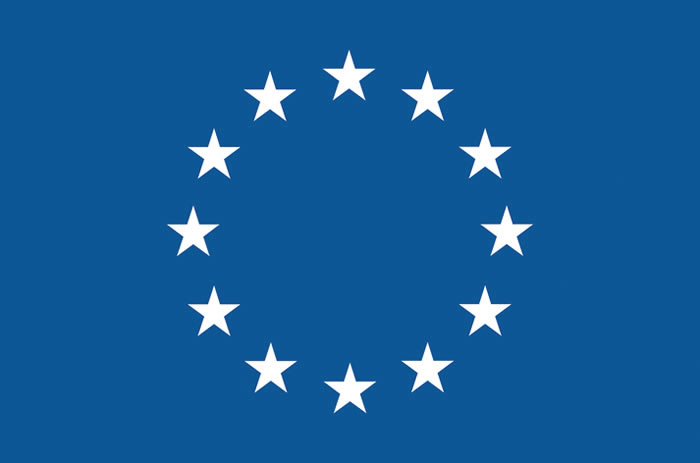Gribbon, Philip

Curriculum Vitae: Dr Philip Gribbon
Date of Birth: 13/07/1968
Nationality : British/Irish
Contact: Fraunhofer-Institut für Translationale Medizin und Pharmakologie ITMP Schnackenburgallee 114, D-22525 Hamburg
Phone: +49 40 303764 271
E-mail: philip.gribbon@itmp.fraunhofer.de
Website: http://www.itmp.fraunhofer.de
Position: Head of Discovery Research, Fraunhofer ITMP
Employment
2021 – Head, Discovery Research, Fraunhofer ITMP, Hamburg, DE
2014 – 2020 Co-Head of Department, Fraunhofer Institute of Molecular Biology and Applied Ecology (IME), ScreeningPort, Hamburg, DE
2008 – 2014 Chief Scientific and Operating Officer, European ScreeningPort GmbH. Hamburg, DE
2005 – 2007 Manager, GlaxoSmithKline Ltd Stevenage, UK.
2000 – 2005 Senior Principle Scientist, Pfizer Ltd, Sandwich, UK.
1995 – 1999 Post-Doctoral Research Associate, Wellcome Trust Centre for Cell-Matrix Research, University of Manchester, UK.
Education
1991 – 1995 PhD in Biophysics, Imperial College, London.
1990 – 1991 MSc in Applied Optics, Imperial College, London.
1987- 1990 BSc (Hons) in Physics, Imperial College, London.
Other activities
2020- Conference Chair SLAS Europe 2021, Vienna
2020- Member European Education Committee, Society for Laboratory Automation Sciences
2019- Chair of the Advocacy Committee, Society for Laboratory Automation Sciences
2019 Conference Chair, European Chemical Biology Symposium, Madrid
2018-2019 Chair of the Europe Committee of the Society for Laboratory Automation Sciences
2018-2020 Scientific advisor to Kaertor Foundation (Galicia, Spain)
2018-2020 Fellow of the Society of Laboratory Automation Sciences
2017 Conference Chair, European Chemical Biology Symposium, Budapest
2015-2018 Member ESFRI Life Science Infrastructure Strategy Board
2015 Conference Chair, European Chemical Biology Symposium, Berlin
2014-2018 Coordinator of EU-OPENSCREEN, the European Research Infrastructure for Chemical Biology and Screening
Selected Publications
- Ellinger B, Bojkova D, …Gribbon P and Ciesek S. A SARS-CoV-2 cytopathicity dataset generated by high-content screening of a large drug repurposing collection, Scientific Data 8, Article number: 70 (2021), 2021
- Kuzikov, M….Gribbon P and Zaliani, A. Identification of Inhibitors of SARS-CoV-2 3CL-Pro Enzymatic Activity Using a Small Molecule in Vitro Repurposing Screen, ACS Pharmacology and Translational Science 2021 (in the press) https://doi.org/10.1021/acsptsci.0c00216
- Gossen J, …Gribbon P,…Rossetti G. A Blueprint for High Affinity SARS-CoV-2 Mpro Inhibitors from Activity-Based Compound Library Screening Guided by Analysis of Protein Dynamics. ACS Pharmacology and Translational Science 2021 (in the press) https://doi.org/10.1021/acsptsci.0c00215
- Günther A…Gribbon P…and Meents A. Massive X-ray screening reveals two allosteric drug binding sites of SARS-CoV-2 main protease. (In final review) preprint here: https://doi.org/10.1101/2020.11.12.378422
- Witt, G… Gribbon P and Pless O. An automated and high-throughput-screening compatible pluripotent stem cell-based test platform for developmental and reproductive toxicity assessment of small molecule compounds. Cell Biol Toxicol 2020. https://doi.org/10.1007/s10565-020-09538-0.
- Ehrnhoefer DE, Skotte NH…Gribbon P, et al. Activation of Caspase-6 Is Promoted by a Mutant Huntingtin Fragment and Blocked by an Allosteric Inhibitor Compound. Cell chemical biology, 26 (9), 1295-1305. e6 2019
- Brennecke P,…Gribbon P. EU-OPENSCREEN: A novel collaborative approach to facilitate chemical biology. SLAS Discovery: Advancing Life Sciences R&d 24 (3), 398-413, 2019
- Sassetti E,…Gribbon P, et al. Identification and Characterization of Approved Drugs and Drug-Like Compounds as Covalent Escherichia coli ClpP Inhibitors. International journal of molecular sciences 20 (11), 2686,
- Moreno-Cinos C, … Gribbon P, et al. α-Amino Diphenyl Phosphonates as Novel Inhibitors of Escherichia coli ClpP Protease. Journal of medicinal chemistry 62 (2), 774-797, 2018.
- de Witte WEA,… Gribbon P… et al. In vitro and in silico analysis of the effects of D2 receptor antagonist target binding kinetics on the cellular response to fluctuating dopamine concentrations. British journal of pharmacology 175 (21), 4121-4136, 2018
- Gilardi A,…Gribbon P,… et al. Biophysical characterization of E. coli TolC interaction with the known blocker hexaamminecobalt. Biochimica et Biophysica Acta (BBA)-General Subjects, 1861 (11), 2702-2709, 2018.
- Korostylev A, Mahaddalkar PU, Keminer O, Hadian K, Schorpp K, Gribbon P and Lickert, H. A high-content small molecule screen identifies novel inducers of definitive endoderm Molecular Metabolism 6(7), 640–650, 2017.
- De Sousa PA, … Gribbon P.. et al. Rapid establishment of the European Bank for induced Pluripotent Stem Cells (EBiSC)-the Hot Start experience. Stem cell research 20, 105-114,
- Borsari C….Gribbon P…et al. Profiling of Flavonol Derivatives for the Development of Antitrypanosomatidic Drugs. Journal of medicinal chemistry 59 (16), 7598-7616,
- Rees S, Gribbon P, Birmingham K, Janzen WP and Pairaudeau G. Towards a hit for every target. Nature Reviews Drug Discovery, 15;1–2
Title
” Compound repurposing by target based and phenotypic approaches to identify in-vitro inhibitors of SARS-CoV2 viral entry and replication ”
Abstract:
Compound repurposing is an important strategy to aid the identification of effective treatment options against SARS-CoV-2 infection and COVID-19 disease. The presentation will cover the results of several repurposing programs based on phenotypic and target based screens using a large scale library of bioactive compounds. Target studies will focus on SARS-CoV-2 main protease (3CL-Pro), also termed M-Pro, which is an attractive drug target as it plays a central role in viral replication by processing the viral polyproteins pp1a and pp1ab at multiple distinct cleavage sites. We have confirmed previously reported inhibitors of 3CL-Pro and have identified 62 additional compounds with IC50 values below 1 μM and profiled their selectivity toward chymotrypsin and 3CL-Pro from the Middle East respiratory syndrome virus (see https://doi.org/10.1021/acsptsci.0c00216 and https://doi.org/10.1021/acsptsci.0c00215 ). In phenotypic studies, compounds were screened by microscopy for their ability to inhibit SARS-CoV-2 cytopathicity in the human epithelial colorectal adenocarcinoma cell line, Caco-2 (see https://doi.org/10.1038/s41597-021-00848-4). These studies have been complemented by extensive structural investigations to reveal the binding characteristics of the compounds (see https://www.biorxiv.org/content/10.1101/2020.11.12.378422v1).
Back to speaker overview Back to Oral- and Flash presentations overview





